Dear Friends!
Few have heard the name of the “Number Zero” airborne capable commando course of the Royal Hungarian Army, the “Professional Course for Physical Training” (PCPT) or “Testnevelési Szaktanfolyam” in Hungarian. Even fewer are those who know about the exact nature and duties of this training course, and unfortunately, those who have been part of it are no longer with us. Thus in his next article, our member, Dávid Kiss could only aim for a schematic picture on the history of this secretive course, and to introduce some of the actions these daring soldiers participated in. Writing this article could not be made possible without the help of Colonel John Molnar, Australian Army, who has been so generously shared with us the artifacts and wartime stories of his late father, László Molnár, who has been trained in the PCPT course. We would like to thank his contribution! Additional information and rectification is welcome!
Historical background
The political and military leadership of Hungary worked on the resolution of the Trianon-dilemma, or the peace treaty closing the First World War for the Kingdom of Hungary, signed on the 4th of June 1920 near Paris, France from the second of its entry into force. In addition to the political revision of the treaty, supported by Regent Miklós Horthy, a scheme for a military option has also quickly emerged, fuelled by the pro-German, revanchist circles of the Hungarian military leadership. The plan asked for the support of irregular forces, outside of the military jurisdiction.
The plan heavily relied on those Hungarians who have been separated from the motherland, now living in foreign neighbouring countries. Military strategists in Hungary started to build up a sufficient force able to be activated in an event of an uprising caused by the Hungarian minorities. These theoretical uprisings would be supported by small groups of well-trained soldiers, able to cause diversionary raids, and help friendly irregular and regular forces operating in the detached parts of Hungary.
Advance of the Royal Hungarian Army has been thwarted by the military provisions of the Treaty of Trianon, supervised by the Military Control Committee (MCC). This committee has been made of the representatives of the Entente forces, and worked in Hungary for seven years, ending its mission in 1927. After the withdrawal of the MCC Hungarian military development could catch up with the modern times.
Those branches and corpses like the air force, or the armoured corps started their development in secret, under the guise of other public bodies (like the Royal Hungarian State Police under the Ministry of Interior, or the Aviation Office, under the Ministry of Commerce etc.). The manpower of the Royal Hungarian Army, maximized by the peace treaty in 35 000 professional soldiers has been reformed by a conscription system, boosting the numbers rapidly.
The cause for the revision of the Treaty of Trianon politically unified Hungary, there were only disputes in the means and ways of achieving this goal. The next logical step was to look for allies in the international politics, causing the development of Italian – Hungarian, and German – Hungarian diplomatic realtionships, while there was also a surprising amount of support for the Hungarian cause from the Soviet Union and by some political circles in Great Britain too. Yet the leaders of both Hungary, Italy, and Germany, empowered by the dissatisfied masses after the bloody First World War, lead their countries on a nationalist venture towards a new type of war, based on rapidity and surprise.
Military Background – the Grenadier Courses
This new, secret and seemingly distant war from 1932 has been orchestrated in Hungary by Department No. 2 of the Chief of Staff Office (D2), officially the “Intelligence and Counter-Espionage” service of the Royal Hungarian Army. From 1936 the work of the D2 has been supported by the newly established Department No. 5 for “Principal and Military Political” issues, which dealt with a variety of topics ranging from military propaganda to the supervision of the Hungarian biological weapons program. One of the tasks of this department was the establishment and liaison of cross-border irregular and paramilitary forces. Up to the fusion of the two departments in 1941 they were co-ordinating and co-operating in the field of espionage and intelligence gathering by utilizing spies, wire-tapping, and many more conventional methods, while experimenting with novelties, like the airborne insertion of specially trained saboteurs.
The method of “vertical flanking”, or the air offensives is just as old as the introduction of parachutes in warfare, first used as lifesaving measures for pilots. In the last year of the First World War the US Army planned for a mass parachute drop in France, which has been called off due to the low quantity of suitable parachutes, and airplanes, not to mention the lack of training for the soldiers conducting the jump. Between the world wars two separate methods of airborne insertion has been introduced: the first is the mass drop of airborne units, mastered by the Soviets, and the second is the insertion of smaller units, or even single agents, able to carry out special missions. Both insertion methods had many setbacks and unpredictable factors, starting with the necessary and complicated training for jump-qualified soldiers, or the acute and mission-specific dangers faced by the paratroopers after hitting the ground, to the relatively big distance between the area of operations from the friendly forces. These problems planted doubt in those Hungarian military scholars, who thought that airborne insertion could only be considered as “neck-breaking acrobatics” and those who are forced to jump out of perfectly functioning airplanes are simply “candidates for suicide”.
The first military program in Hungary, led by Major vitéz Kozma István de Felsőtarja, has been one of the “Grenadier Courses" in 1936, which tried to incorporate the concept of air-landing forces with agents inserted behind enemy lines via parachutes. These agents were trained to destroy railroads, bridges, or to incite uprisings, and even carry out political assassinations. They were also capable of marking and securing safe landing zones, with the help of local Hungarians thus providing an assembly point for the air-landing grenadiers.
In this concept of elite airborne light infantry, guided by parachutist agents, many of the key features of modern day Special Forces units are present, like covert approach, stealth movement in the area of operations, targeting of high-value targets and VIPs, force-multiplying effort by relying on local support etc. The main goal of the “Grenadier Course” of 1936 has been the establishment of a rapid-deployment airborne force of elite soldiers, which is capable to operate in the enemy territory with the help of local Hungarians, thus speeding up the military solution for the retake of annexed parts of the country.
Launch of the “Professional Course for Physical Training”
After a single exercise, with air-landing elements, the “Grenadier Course” has been cancelled on the 7th of September 1936. Though the course had been shut down, its lessons and experiences were recorded. The lack of parachute jumps conducted by the grenadiers were due to technological disadvantages, and not because of theoretical doubts, thus the idea of parachutes used by the armed forces prevailed. In accordance with these developments from 1937 on the Aviation Office made it mandatory for every pilot candidate, and all of the future Special Forces units of the army to conduct parachute jumps.
By this time the Nazi Germany became the champion of revision of the peace treaties concluding the First World War. German propaganda calling the Versailles Peace Treaty “unacceptable”, and the re-armament of the German army led to the rise of pressure in Europe.
Reacting to the wind of changes, on the 5th of March 1938. Hungary has declared its new re-armament and military development program. In this five years long research and development enterprise Hungary tried to catch up to the armies of the region in spite of its noticeable lag due to the Treaty of Trianon.
The financial help of the re-armament program made it possible for the D5 to propose for a new, airborne capable special course, founded on the experiences of the canceled “Grenadier Course”. The new course emphasised the use of airborne-qualified special agents and soldiers instead of the air-landing infantry concept. The masterminds behind the course chose a codename not too suspicious nor too attractive: “Professional Course for Physical Training” (PCPT).
Entry conditions for the course started with presenting valid matriculation documents, thus only those soldiers were eligible, who, after one year long national service were deemed fit to become reserve officers and possessed the necessary physical and mental abilities. It has been listed as advantage for the candidate to come from areas located in the neighbouring countries, or by the new border. The organizers were looking for extraordinary officer cadets, who have excelled in every aspects of their training.
Promising candidates were hand-picked by the officers of D5 and had to pass an entry exam, consisting of map-reading, solving tactical problems, and physical fitness examination. Those who have passed this stage of pre-screening, were offered a place in the newly introduced special training program. Participation would accelerate their military career, ending their national service in the rank of Lieutenant of the reserves.
The “Professional Course for Physical Training” has started off on the 3rd of May 1938. in three classes. Class No. 1 consisting of 28 candidates moved to the barracks of the Royal Hungarian 101. Railway- and Bridge Construction Regiment in Szentendre. Their commander was Captain Ferenc Kiss (or Kovács), a sapper officer. Class No. 2 with 19 candidates moved to the Engineers Barracks of the Royal Hungarian 1. “Bornemissza Gergely” Engineer Battalion on the Háros-island on the Danube and started training in the summer of 1938. Number of candidates, place or date of training for Class No 3 is unknown.
The PCPT as a whole has been headed by the experienced Captain Valér Stefán, serving with D5 at the time.
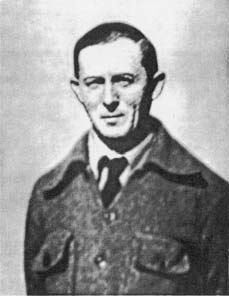
Valér Stefán
(source: Dr. Jenő Farkas: A Szent László Hadosztály Katonái írták… I. B (Jegyzet) (Gödöllő, 2005. private publishing)
Main goal of the PCPT, as recalled by Dr. Győző Csongor in 1997, member of Class No 2 was:
“(…) to gain individuals with higher level of military skills (knowledge in the field of use of modern weapons, basic foreign language skills, etc.) proficient in the ways of several military branches, capable to achieve different goals on the battlefield. Long story short: the candidates after the training had to be ready to deploy both on land, and in the air.”
This description is further supported by the recollections of László Molnár, who has seen the PCPT as a commando-like training, similar to those of the British Special Air Service (SAS), established in 1941. Paratrooper Lieutenant vitéz Domonkos Ladányi has described the course as a “confidential (…) military sabotage course”. This description is further strengthened by the 1988 article of Csaba Hornyák, in which he quotes Valér Stefán as it follows:
“This unit had to replace the missing Hungarian aerial bombardment ability. The parachutist group has been trained for securing or destructing railways, bridges, and tunnels.”
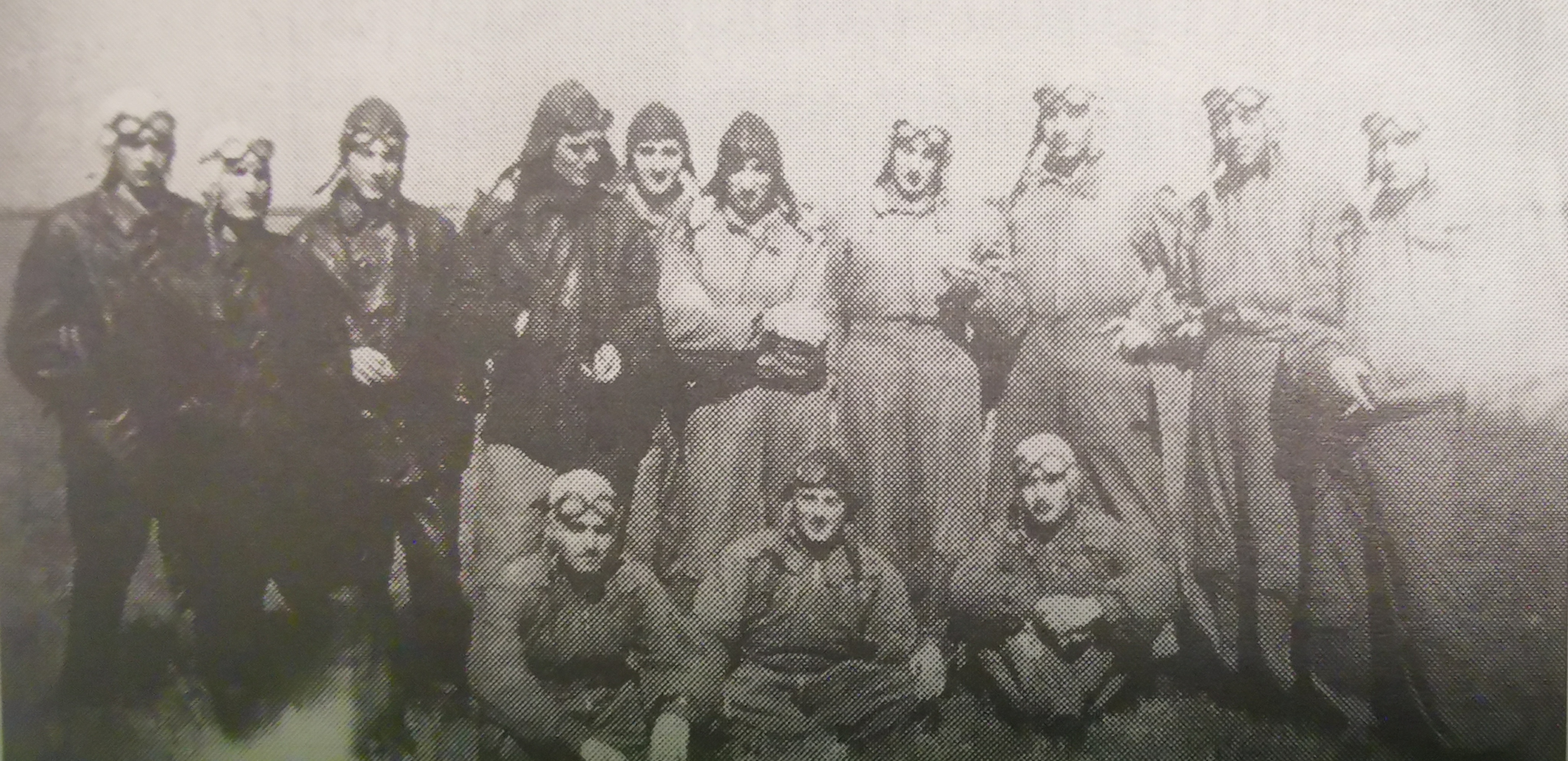
Members of the PCPT on the 6th of September 1938. Fourth from the left, wearing a lether jacket is Captain Valér Stefán, commanding officer of the Course.
(source: Dr. Győző Csongor: „Testnevelési Szaktanfolyam” in.: “Magyar Szárnyak” vol. XXV. issue 25. 1997. pp. 182. – 183.)
Training
Ahead of the volunteer officer cadets were series of demonstrations and lectures, in a newly introduced system: the classes were headed by experts, visiting the course only for a short period. Thus candidates of the PCPT would only see constantly the commanders of their classes, and the lecturers, coming from several different units, would not be able to blow the cover, or get to know the purpose of the secretive course. Commanders of the classes have also attended the lectures with their fellow candidates. The commanding officer of Class No. 1 taught explosives handling while Captain Stefán led training on work behind enemy lines. During live explosives training the candidates have used British-made fuzes, and practiced with Nitro-3 explosives.
Candidates of the PCPT have learned to drive different vehicles, protection against gas attacks, encryption, and small arms handling. In the live fire training a new, unusual method became prevalent: the candidates had to use their spare time to improve their marksmanship abilities, with handguns from Romanian and Czechoslovak origins. Ammunition for those weapons have been provided amply.
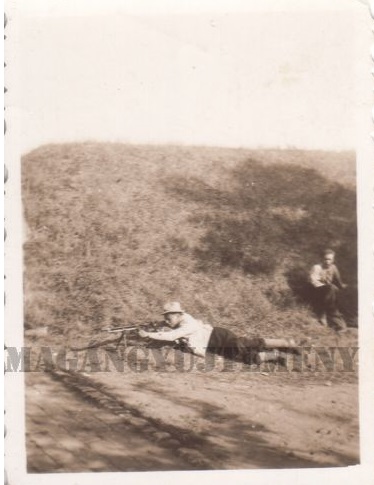
László Molnár during his training with a light machine gun
(source: Col. John Molnar)
Vehicle training has been emphasized. Candidates of the PCPT had to handle motorbikes, cars, and trucks, and were familiarized with the basics of operating locomotives, trams, and motor boats. Members of the course went on long bicycle trips, both used for strengthening their stamina, and as orientation training.
Physical endurance was a key during water training too. As part of the course, members of Class No. 2 had to paddle down the Danube from Háros to Paks, which is approximately a 100 kilometres long water trip. In this phase of the training danger was imminent.
The memoire of László Molnár recalls an occasion, when during a river crossing exercise on the Danube he has been steering his boat standing in its front part. His pole lost its footing on the river bed and he lost balance falling over the bow and then under the craft. As he tried to resurface in the freezing water, he was prevented from surfacing by the hull. After more than a minute, one of the other cadets managed to reach under, grab him and pull him into the boat.
For several weeks there were lectures conducted by the members of the Association of Hungarian Radio-Amateurs (AHRA). During these meetings the civilian members of the association, in co-operation with the Ministry of Defence, tried to introduce short-wave radio technology, types of radio sets, and the use of the Morse-code. Based on memoires these technologically highly advanced lectures unfortunately could not penetrate the tired minds of the candidates of the PCPT.
Members of the PCPT have visited an exercise where they have been familiarized with the details and weak points of Hungarian armour, and the use of the anti-tank gun. The candidates have toured the different army bases of Hungary, where they were introduced to the everyday work of different units. During their training candidates of the PCPT have realized that they have got lots in common: most of them spoke at least one foreign language from the neighbouring countries, lots of them had relatives or friends in the detached territories. This knowledge made the candidates confident about the goal of their training. They were sure that after completing the course they would be sent into battle in support of the revisionist cause.
After long and demanding training came the most dangerous, yet most novel part of the course: the parachute jump. Member of Class No. 1 vitéz Domonkos Ladányi summarized the core of the course up to this point:
“Our secret training has been extremely interesting. We had to excel in driving cars, riding motorbikes, and shooting rifle and pistol, but after that came the grenade launcher, mortar, light and heavy machine gun too. Hand grenade practice has been pivotal. All of it has been seen by everyone as interesting and useful, but we were pretty much afraid of parachuting.”
As the Royal Hungarian Army have never ever conducted parachute training before, this time candidates, of the PCPT have wandered to uncharted regions. The three classes took their jump training in different places and times. Class No. 1 moved to the Pápa military airfield in July 1938, while Class No 2. relocated to the airfield in Szombathely between 4th to 11th of September 1938 to prepare for parachute jumps. By the recollections of vitéz Domonkos Ladányi, Class No 3 had no jump training at all, due to the short training period of the class.
Parachute training has been largely immature at the time. The two volunteer pilots, Lieutenant Gyula Mészöly in Pápa, and Lieutenant Imre Telbisz of Szombathely, lecturing the candidates had no prior experiences as instructors. They have been picked for the task only because they have volunteered to conduct the training.
First phase of training meant “familiarizing flights” utilizing the different airplanes available on the airfields. These flights were nicknamed by the candidates as “sightseeing tours”. The opportunity to fly has been considered a privilege for the candidates, as aerial transportation at the time has been a novelty technology. The various night-time and daylight flights also helped to improve the map-reading and orientation abilities of the candidates.
Second phase of the jump training has been parachute packing. the candidates of the PCPT were using Italian-made Salvator, German Heinecke, and Schroeder, and US-British Irving parachutes. The reason behind this colourful variety of parachutes has been really down to earth: these were the main parachutes used by the Royal Hungarian Air Force aircrews, available on the airfields. Dr. Győző Csonor, member of Class No. 2 remembered to the importance of learning how to pack a parachute this way:
“During the first week the instructors taught us how to pack parachutes properly. From this time on this important action had to be done by individually, with our own hands. We have placed our packed parachutes under our pillows, as we have only trusted those chutes we have packed ourselves.”
Physical training also played an important role in parachute training. In the absence of suitable training equipment the candidates of the PCPT had to improvise. The soldiers climbed up on top of 5-7 meters high haystacks, and jumped to the ground, to familiarize with the sensation of landing and the forces they have to deal with. Dr. Győző Csongor remembers to the details of ground training as seen below:
“The most important part was for the jumper to start kicking in the air before landing, and when he has touched the ground he had to throw himself to the left or right side, to avoid possible leg or hand fractures.”
Future commandos of the PCPT after a brief period of training could board the Italian-made Capronni Ca.101 bomber planes, nicknamed by their crews as “flying coffins”. The tri-engine, canvas covered airplane could carry up to the skies six parachutists at a time. Every jumper had to wear a summer canvas flight coverall above their uniforms. For footwear they had lightweight gym shoes. Covering their heads they wore a flight cap, nickname “haube”, with dust googles on. Special delivery devices for heavy equipment, like drop canisters, or bundles were not introduced yet, so the parachuting commandoes had to bring everything on and inside their clothes.
Every parachutist had two parachutes secured on his harness. The main parachute on their back was responsible for their safe landing, while the reserve parachute on the chest had to be kept for the case of malfunction with the main parachute. After 60 years Dr. Győző Csongor has remembered to his first parachute jump vividly:
“The jump has been commandeered by Captain Ferenc Czékus, lead pilot. He rose his hand. Humming of the airplane became slower, when he pulled his hand down. The first of us crossed his hands on his chest jumped, and we have followed him in order. Our first group has conducted its jump successfully. I can still remember, that before the day of the jump I have found a four leaf clover. It brought luck to me, as on the next day I had an extremely joyful jump, landing on soft ground, in a field covered in clovers.”
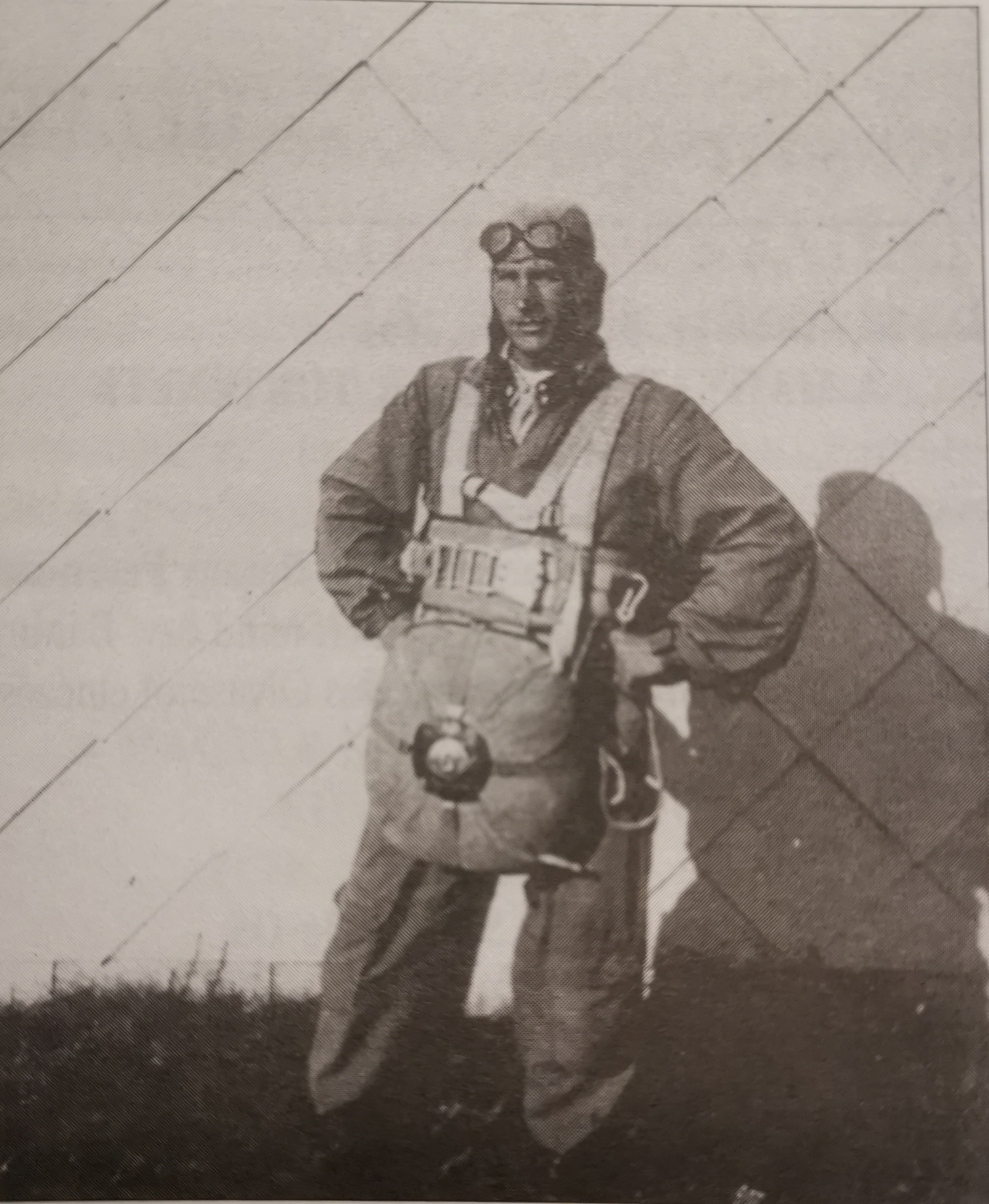
Győző Csongor before parachute jump. His Italian-made Salvator parachute is visible.
(source: Dr. Győző Csongor: „Testnevelési Szaktanfolyam” in.: “Magyar Szárnyak” vol. XXV. issue 25. 1997. pp. 182. – 183.)
Not everyone got lucky though. For example during his first jump, Lieutenant Imre Telbisz, lead instructor of the parachute training on the airfield of Szombathely injured his knees, when his main parachute malfunctioned. His life has been saved only by landing in deep mud.
After all candidates of the Classes No 1 and No 2 of the PCPT completed at least one parachute jump, while there were some daredevils who were able to step out of their airplanes two, or three times to trust their lives to a silk canopy.
Nonetheless members of the PCPT were first of all commandoes, thus parachute training has been only one, unquestionably memorable stop in their training. By this time the candidates were capable to handle land, water, and air transportation too, thus they could see themselves capable of conducting parachute jumps if necessary, to reach their area of operations.

Landing after a parachute jump
(source: Col. John Molnar)
Finally those reserve officers, who have completed their training in the PCPT, got assigned to a new unit. There were no certificates handed out, no special badges to symbolize the hardships of training, or any other way of recognition for those who have tackled the challenging course, as their future missions just as the course itself has been considered to be “Top Secret”. Only officers of D2 knew the complete list of those volunteers who were capable to strike behind the borders of Hungary if needed. In the military records of the successful graduates there was only a short acronym proving that they have completed “PCPT”.
This secrecy led to some interesting interlude and unpleasant moments. As for PCPT graduate László Molnár who have continued his service as a Lieutenant of the reserves in one of the sapper companies of an infantry regiment, for the amusement of his older brother István, still breaking his back at officer training. To avoid fraternal questions, László Molnár got into a full blown rivalry with his brother, who could not understand, how his younger brother got commissioned before him.
Deployments
Graduates of the PCPT have been scattered in the Royal Hungarian Army to continue their service. By the available sources this hidden “special reserve” has been activated in late September or early October 1938. In April of this very year, the Royal Hungarian Army started to secretly mobilize troops against Czechoslovakia. As part of this plan, nineteen so-called “rifle battalions” were created, and marked with Roman numbers between I. and XIX. These battalions were made up of reservists, volunteers, and re-activated officers, but have not got incorporated into the battle order of the Royal Hungarian Army and differentiated by their name from the infantry battalions of the army. The main goal of these rifle battalions had been to be ready to deploy to the former Hungarian territories in case of the disintegration of Czechoslovakia, which has been threatened by Germany due to the large numbers of ethnic Germans living in the country.
After rooting out the unfit, unreliable, or far-right leaning (pro-Nazi, and Hungarist) elements from these battalions, the remaining eight rifle battalions took the name of the famous “Rugged Guard”. The first military force under this name has got established back in 1919 as a 160 – 250 strong irregular militia, waging war against both the Communist government of Hungary, and the Austrian armed forces, on the western parts of Hungary, trying to establish a free, anti-communist enclave there. They have got their name after the mix of uniforms, equipment, and weaponry ranging from military to civilian which they have used.
The new “Rugged Guard” has been considerably bigger and better equipped than its predecessor. The 940 strong unit, dressed in brown coveralls, wearing brown berets and armbands with the Hungarian national colours (red, white and green), marched to the vicinity of Vásárosnamény, to the north-eastern border of Hungary. Their area of operations would be the then-Czechoslovakian region, Transcarpathia, where a considerable Hungarian minority lived.
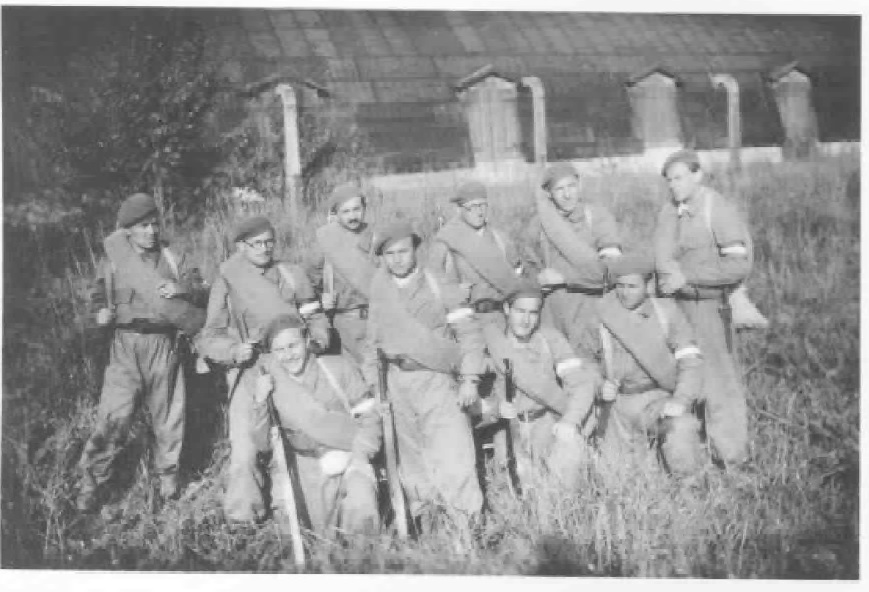
Members of the "Rugged Guard" from Sopron, Hungary. These university students are wearing the typical "unifomr" of their riffle battalions.
(source: Soproni Szemle 2006. issue 1.)
Military movements and actions were coordinated by the former commander of the PCPT, Captain Valér Stefán, while the overall military leader of the operation was the commander of D5, Colonel Sándor Homlok. On the political leadership there was Miklós Kozma, former Minister of Interior, and at this time CEO of several Hungarian state media outlets. The face of the operation has been a former 1919 “Rugged Guard” commander, Lieutenant of the reserves vitéz Iván Héjjas, known for his nationalistic views as a Representative in the Hungarian Parliament. His unit operated under the codename “Unit H”.
After the signing of the Munich Treaty by Germany, Italy, Great Britain and France, on the 30th of September 1938, Czechoslovakia ceased to exist. This political turn gave the opportunity for the “Rugged Guard” to spring into action. The Hungarian government gave permission on the 2nd of October, and by the 5th of October the “Rugged Guard” started to reconnoitre the positions and strongholds of the Czechoslovak border guards. On the next day the first propaganda, reconnaissance, and saboteur groups crossed the border. Their mission was to spread leaflets, monitor troop movements, and to cut communications and roads.
By the memoires of László Molnár the first members of the PCPT have arrived on the 6th or 7th of October 1938 to the border, acting on direct orders from Regent Horthy. The Hungarian commandos there joined “Unit S”, led by their former commander, Captain Valér Stefán. After the successes of the first reconnaissance patrols, sabotage units have moved in form the night of the 9th of October 1938.
The exact number of cross-border actions conducted by the commandos of the PCPT is unknown, however the main characteristics are easier to point out by the surviving few sources. Lieutenant László Molnár has described one of their missions as it follows:
„(...) crossing the border in civilian clothing (nothing to identify us as Hungarian or military) we were a three-man team ordered to destroy a bridge. The objective was to imply the damage was caused by Czech partisans against the Government, thus pushing for Czech support from the Hungarian Government. Crossing the border at night, each member of the team was specifically tasked and operated without a team leader. Orders included suicide on capture and we all were issued with a cyanide capsule.”
The mission succeeded, although the Czechoslovak guards on the bridge noticed the three commandos and opened fire. Before blowing up the bridge, the Hungarians fired back. The three-man group then exfiltrated on separate routes back to Hungary. After debriefing the commandos working together on a mission would never see each other again.
Another action carried out by PCPT commandos is known in details. On the 22nd of October 1938. at 1800 Ensign vitéz Ferenc Fülöp has led his four-men strong group to cross the border near the border village of Magosliget with the mission of blocking the railroad between Tiszaújlak and Nagyszőlős. After crossing the Tisza River the soldiers blown up the railroad on three spots then during the night returned to the Hungarian side.
These two examples are suggesting that the PCPT commandos were mostly used due to their knowledge in the field of explosives and for their training in actions behind enemy lines. PCPT commandoes operated in civilian clothes, mostly during the night period, and after their missions were completed they have left their area of operations immediately. This “hit and run” tactic minimizes the chance of getting detained, while narrowing down the timeframe of the actions to several hours only.
About the use of cyanide capsules, handed out to the PCPT commandoes there are no other sources, than the memoir of László Molnár. At the same time there is a known example of a so-called “poison-edict”, issued by Captain Valér Stefán on the 3rd of November 1938. In his order the Captain communicated to his troops that those who are willing to stay and continue the harassing missions on the Czechoslovak troops, poisonous capsules would be handed out, to be used in case of imprisonment. In his orders Captain Stefán noted that anyone unable to continue mission due to injuries must be shot on sight to avoid capture and interrogation.
The reason behind the draconic decree has been to comply with the newly published “First Vienna Award” in which Hungary got the southern parts of Slovakia, and the south-western parts of Transcarpathia with the political aid of Germany. The Award called for the demobilization of Hungarian forces only keeping the necessary forces on the border, thus Captain Stefán had to ruse his soldiers into deciding whether they would like to remain, or leave. By this method dozens of unauthorized and undisciplined “local volunteers” of the “Rugged Guard”, who have joined the ranks of the Hungarian paramilitary unit on their own, started to leave.
By the views of Domonkos Ladányi, former PCPT commando, who has been tasked with patrolling the border and reconnaissance, the First Vienna Award achieved a political victory, faster than the military leaders thought. This led to the relatively limited use of the PCPT commandos during the conflict.
By the memoires of Lieutenant László Molnár, the PCPT commandos have also participated in the so-called “small war” between Slovakia and Hungary raging between the 23rd of March 1939 and 4th of April 1939. Aim of this war has been to secure a strategically better new border 15 – 20 kilometres further in the Slovakian territory, in the Transcarpathian region, which has been achieved.
During the summer of 1939 some members of the PCPT were active on the Romanian border too, according to the memoires of László Molnár and Domonkos Ladányi. As the later recalled in 2007:
“(…) there were a few of us, who liked so much this exciting, special military experience, that we have volunteered for further service, and in the autumn of 1939, with our re-called old comrades we were in small groups on the Romanian border.”
Finally, the PCPT commandos have been disbanded after the 30th of August 1940, when the Second Vienna Award gave the northern parts of Transylvania to Hungary, partially resolving the question of revision, and indebting Hungary to Germany. Unfortunately, as the details of the goals, members, or missions of the PCPT has been considered to be “Top Secret” from the start of the course, details of these missions mentioned above, could not be unearthed. Thus further research is desired and necessary in the topic.
Effects of the “Professional Course for Physical Training”
Reactions to the operations of the second „Rugged Guard” also connected to the Hungarian soldiers trained during the PCPT, thus it is suitable to unfold the Czechoslovak point of view too. Every Czechoslovakian radio stations has broadcasted the interview with First Leiutenant József Prém, the captured commander of 1st company, of the XVI. Rifle Battalion. This broadcast has been intercepted by the Hungarian authorities, and translated in a confidential report on the 24th of October 1938. This report is a good representation of the propaganda war used by both sides in the conflict. As this paper goes, the introduction of the broadcast is the following:
“Finally our news regarding the Hungarian terrorists reached the Hungarian radio broadcasters too. (…) This is an improvement to see the radio at Budapest be under the necessity of accepting the truth that the Hungarians wanted to solve the territorial question by the means of terrorism, while they have negotiated with our government on the peaceful ways of resolving the problem. (…) We would like to apologize to the families of the terrorists, for we have labelled the members of these irregular units as bandits. If they would see them in their rugged, ruffian-outfits, hiding their hand grenades, pistols, and other weapons, they would admit to the fact, no one would think about it that these men had doctors of law or medicine, state officials, and journalists amongst their ranks. (…)”
The impact of the PCPT could be also measured on the evolution of the airborne capability of the Royal Hungarian Army. The makeshift jump training in the Szombathely airfield had been visited by Captain vitéz Árpád Bertalan, who have established his Parachutist Experimental Unit at the same place in September 1938, incorporating the experiences of the PCPT into his own training system. Dr. Győző Csongor recalls this innovative officer, visiting the parachute training of the future Hungarian commandos, as it follows:
“This manful veteran has been famous for his innovations. This time he has equipped himself with several different weapons for self-defence, like a revolver, hand grenades, a carbine on his back, led by his firm believe, that a paratrooper by this way can defend himself in the air, and after landing, in ground combat!”
The experiences of the candidates of the PCPT have been instrumental in the introduction of the new Hungarian made parachute system, the 39 M H. Gy. double parachute. A committee has been established to evaluate the freshly tested and upgraded parachutes. The experts have met in Székesfehérvár on the 31st of January 1939. In the committee as a representative of D5 some candidates of the PCPT were present, just like Ensign vitéz Domonkos Ladányi.
In the tactics of the parachute unit, expanding to a regiment size by the end of the war, there were also some elements showing similarities to the tactics of the PCPT. In the autumn of 1939 the concept of “airborne hunters” emerged in the Hungarian military literature. Paratrooper Lieutenant Ferenc Makray demonstrated the new method, clearly inspired by the commando capabilities of the PCPT through an example:
„The mission is to neutralize a highly important command post. As all of the higher commands are defended by strong anti-aircraft systems, it is impossible to deploy from low altitude. The combat patrol has to jump from high altitude (6 000 meters), as by this way the airplane could not be seen or heard by the enemy. The jumpers open their chutes 2 – 300 meters above the ground. The jump is conducted precisely at dusk. (…) The twilight is not a setback, more likely an asset, thus the use of its cover is possible due to the training of the deployed team. (…) This level of higher training justifies the need to separate the airborne forces, where the bulk of the force is able to carry out missions, asking for static jumps. The other, smaller part is the group of airborne hunters (…) which could be deployed only if there is a job suitable for them.”
Also noteworthy is the fact that after 1945, and with the start of waves of reprisals against former members of the Hungarian armed forces, nor the Soviet, nor even the Hungarian military intelligence agencies were interested in the details of training and mission of former members of the PCPT. There is no evidence of large scale manhunts, or even imprisonment or attempts to silence or marginalize those who were part of this special training course and participated in secret cross-border actions. It is possible that contemporary investigators simply slipped over the real goals and deployments of members, of the PCPT, who were reserve officers at the time of their training, which itself emphasised the importance of secrecy.
These circumstances made it possible for former PCPT commandos, to blend in during the hard times of the new political era in Hungary, and even climb to high state positions, as deputy-director of a county museum, or even to continue service as career soldiers, and retiring without any negative discrimination, and in relative wealth. In this aspect the complex system of secrecy, rendering difficult even for modern researchers to investigate the history of the course, helped the former Hungarian commandos to survive, adapt and blend in in a new, and hostile environment.
Those former PCPT students, who were persecuted, imprisoned, deported, and had to endure being used as scapegoats during show trials after 1945, were convicted for crimes not related to their involvement with PCPT.
By its goals, structure, implementation, and the achievements, the Professional Course for Physical Training could be viewed as a special forces course, before its time. However its members have not got the equal recognition, due to the lack of special course completion badges, the lack of a joint military unit connecting the members, and last but not least due to the lack of official documents and memoires depicting the history of the PCPT. The commandos were operating in civilian clothes, to avoid detection, while on Hungarian territory could only wear unmarked uniforms without rank insignias. These factors all added to the silence of the former PCPT members, who, after the war, would only discuss their involvement with this secret course in form of short anecdotes, sometimes decades after the actual events.
Due to these circumstances military historians would only mention the course, as a step in the evolution of Hungarian airborne forces, concentrating on the details of the makeshift parachute jump training, overshadowing the other aspects of the training.
It is clear that the Professional Course for Physical Training as the first complex special forces course in Hungary, had much larger impact on the military doctrine of the Hungarian armed forces regarding airborne capability, irregular warfare, and sabotage as it seems at first. Thus further research in the history of the course is an important mission for scholars thriving to understand the beginnings of the history of the Hungarian special forces.
Short biographies of members of the Professional Course for Physical Training
Valér Stefán
 Valér Stefán
Valér Stefán
(source: Dr. Jenő Farkas: A Szent László Hadosztály Katonái írták… I. B (Jegyzet) (Gödöllő, 2005. private publishing)
Born on the 24th of September 1902 in Szigetvár. His military career is a colourful one, with many different service posts and duties. One of these positions has been the opportunity to command the PCPT. The first assignment for the young Lieutenant Stefan, freshly graduating from the Ludovika Academy in 1924 as an infantry officer was with the 8th honvéd infantry regiment, until 1929, when he has been assigned to a course for staff officers of the Military Academy in Hungary. From here he has been posted to the staff of the 1st mixed brigade of Budapest in 1932 as a First Lieutenant.
In 1936 as a staff observer of D5 he is sent to Spain to gather information on the situation and novelty methods on the battlefields of the ongoing Spanish Civil War. After commandeering the PCPT he is taking part in the activities of the “Rugged Guard” in Czechoslovakia, as the commander of the “Unit S”. In this capacity he had the opportunity to lead again some of his former PCPT students.
Between 1939 and 1941 he is posted to various frontline units, interrupted by a short period in 1940, as head instructor of an assault course in Várpalota, Hungary. From 1942 Captain Stefán served on the Eastern Front as the leader of the “evaluations group” of the 2nd Honvéd Army. After several positions as battalion commander in different units, he became the commander of the Grenadier Regiment of the elite Szent László Division as a Lieutenant Colonel. He is taken prisoner in this function on the 27th of December 1944.
After a brief stop as a Soviet prisoner of war, first at Márianosztra, Hungary, then in Usman in the Soviet Union, where for a short time Lieutenant Colonel Valér became the commanding officer for the Hungarian prisoners of war stationed in the camp, he has fimally offered his help to the Department of Military Politics, searching for war criminals. Despite his efforts to be aligned with the new communist system in Hungary, he is arrested in 1953 as the accomplice of General Rudolf Andorka, who has been sentenced to imprisonment in a show trial for war crimes. Valér Stefán has been also sentenced to prison.
After his release, Valér Stefán, this colourful and expert career soldier, known by his soldiers as a daring and brave commander, had to find a civilian occupation. He became a land surveyor. He has died of complications with one of his dental filing in 1972.
Dr. Győző Csongor
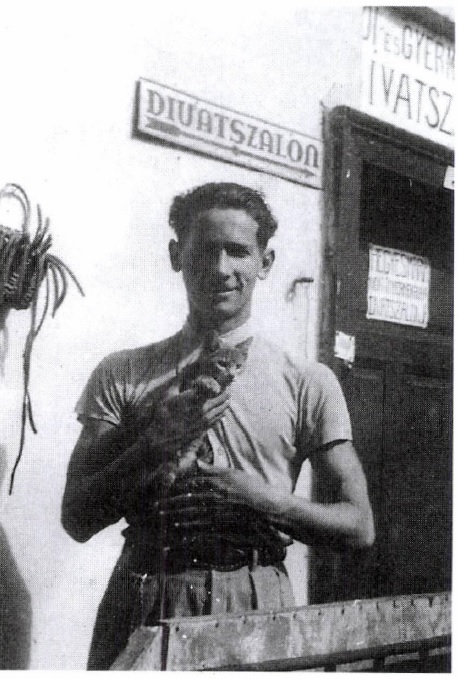 Dr. Győző Csongor in 1941.
Dr. Győző Csongor in 1941.
(source: Dr. Béla Gaskó: Dr. Csongor Győző in.: “A Móra Ferenc Múzeum Évkönyve: Studia Naturalia 1.” Szeged, 1999.)
The author of a pivotal memoire was born on the 27th of February 1915 in Szeged, Hungary. The committed natural science enthusiast travels Europe as a researcher. Up to 1937 he visits Transylvania, Austria, Bulgaria, Turkey, Italy, Switzerland, and Germany. These trips equipped him with botanical and language skills, in addition to travel experiences, not common to the era. After his service as an Ensign of the reserves in Class No 1. of the PCPT he has travelled to the botanical research facility in Cluj-Napoca (then Kolozsvár, Hungary) to study, then work there.
Dr. Győző Csongor had his science career interrupted by military service several times. He has served on the Eastern Front, in the communications company of the 13th light division. In spite of his brief stints with the military he has successfully graduated as a teacher of biology and geology. After the 1944 total mobilization orders in Hungary he had fallen into Western captivity in Bavaria.
After the Second World War the then 30 years old continued his education in Debrecen, Hungary, earning a PhD. in 1947. From this year he is also a member of the Hungarian Society of Numismatics, specialized in researching and collecting coins. Dr. Győző Csongor has published his zoological book on the life of the Palingenia longicauda or the Tisa Mayfly in cooperation with László Móczár in 1954. As a numismatic expert he has published his work under the title “Memorial coins and plaques of Szeged” working together with Ilona T. Simon.
Dr. Győző Csongor has worked as an elementary and high school biology teacher between 1947 and 1952. Although he has enjoyed to teach children, the strengthening political pressure coming from the Communist regime of Mátyás Rákosi made him wish to flee. In 1991 he recalled a typical and dangerous interlude of the era:
“(…) when I have talked about the rákosi viper to the children, I have been reported. The informer had lacked proper knowledge of biology, thus could not know that near the Rákos-river there lives a special type of snake. I had to be a teacher in an era, when teaching had been made a hateful profession. This feeling became stronger in me, than the passion for educating children.”
From 1952 to 1975 Dr. Győző Csongor has worked in the Móra Ferenc Museum in Szeged. The highest position he held during his 23 years of employment there has been deputy museum director. After retirement he remained active in field research, publications, and botanical experiments. Dr. Győző Csongor, also called to be “the last polymath of Szeged” has passed away on the 15th of December 1997. His short memoir has been published in this year in the military aviation magazine “Hungarian Wings” (Magyar Szárnyak) recollecting his time as member of the PCPT.
Domonkos Ladányi
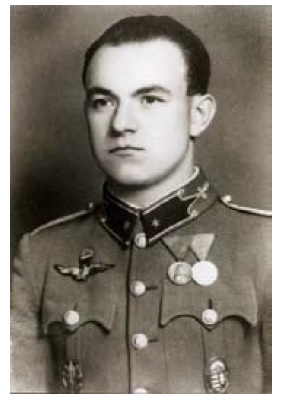 vitéz Domonkos Ladányi as a paratrooper First Leiutenant
vitéz Domonkos Ladányi as a paratrooper First Leiutenant
(source: “Argentínai Magyar Hírlap” January - February 2006.)
Born on the 10th of January 1917 in Balassagyarmat, Hungary, Domonkos Ladányi has been part of PCPT Class No. 1. After his service in this secret course he became a professional “re-enlisted” officer completing a course of the Ludovika Academy. From there he has been sent to the Munkács castle in 1940 for troop service.
Domonkos Ladányi has volunteered to the Royal Hungarian 1st “vitéz Bertalan Árpád” Parachute Battalion in 1941, just after the tragic combat mission to the former Yugoslavia, starting with an air catastrophe on the airfield of Veszprém, Hungary on the 12th of April 1941. Here the first commander of the parachute unit has perished in the flames of the lead airplane crashing to the ground after taking off.
Domonkos Ladányi has recalled the training at the parachute battalion in his 1988 memoir:
“The month-long trial service had been unusually demanding. From the 50-or-so officers volunteering to serve in the unit there were only 30 of us actually starting the training and by the end there were only 20 of us. Main course for the day had been physical training lasting for 7 or 8 hours. It gave us so serious muscle cramps that we were unable to drag ourselves around from the second day on.”
From the twenty officers completing the parachute training, only eight had been chosen to serve with the unit. First Lieutenant Ladányi remembers this special moment as it follows:
“Our dreams came true… the older members of the unit accepted us as one of their own. We were joyful. I don’t want to lie, we had lots of vanity and pride inside!”
As a young paratrooper officer 1st Lt. Ladányi has volunteered for the Eastern Front in 1942 for “gathering experiences”. In this function, career officers and non-commissioned officers of the Parachute Battalion were posted with various combat units on the Eastern Front to gather first-hand experiences and observations on the ongoing modern war. 1st Lt. Ladányi has been sent to the area of Makow, located on the southern part of modern-day Poland for anti-partisan duty.
On the 21st of August 1944. First Lieutenant Ladányi has taken part in the first combat mission of the Hungarian paratroopers since 1941 as a commander of a small scale force of paratroopers. This group of Hungarian paras has blocked the Tornya pass through the Carpathians in front of the Soviet Red Army. The combat patrol had lost in the brief battle four of its members killed in action and further 12 wounded. It highlights the capabilities of the group that most of their casualties have occurred during their retreat, caused by Soviet air raids and artillery barrages. On the morale of the Hungarian paratroopers 1st Lt. Ladányi wrote this:
“In general the paras were used in the toughest places, most of the time against an enemy numerically superior multiple times. It was a common paratrooper custom, not to talk about one’s own personal deeds in battle, but to highlight others, adding at most the phrase: ‘I was present too’ (…)”
Due to a shrapnel piercing his thigh, and other minor wounds, occurred during the battle mentioned above, First Lieutenant Ladányi was not able to continue his service with the paratroopers. He has undergone surgeries four times, and at the start of 1945 was still recovering in a hospital in Austria. Yet he was healthy enough to escape from his bed, and try to find his former unit. He has been taken prisoner by US forces near Linz while doing so.
Enduring an adventurous trip through Austria and Italy Domonkos Ladányi made his way to Argentina, where he became a mason’s assistant, then a refrigerator factory technician, mechanic, then finally a director of a textile factory, working there up to the date of his retirement in 1981. About his military past he recalled:
“Though I had to take off my uniform, but in my thoughts and deeds I have remained a Hungarian paratrooper! Here, in the immigration my national pride has just strengthened and I appreciate the fact that I was born a Hungarian.”
Vitéz Domonkos Ladányi, former paratrooper first lieutenant has died on the 24th of July 2011 in Buenos Aires, aged 95. He is mourned by his wife, three daughters, six grandchildren, and five great-grandchildren.
László Molnár
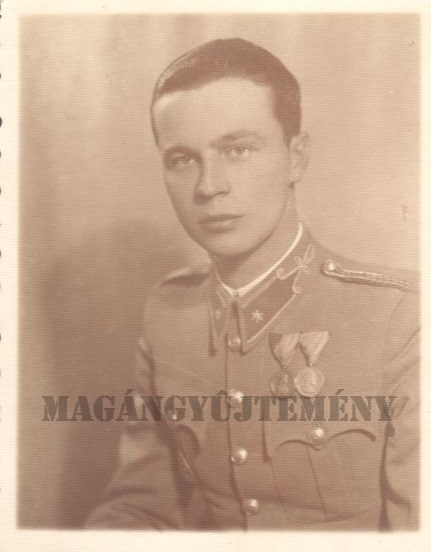 László Molnár
László Molnár
(source: Col. John Molnar)
László Molnár was born on the 9th of November 1917. in Sopron, Hungary. His father is István Molnár-Kozák, served as a corporal in the 5th Hussar Regiment. His mother, Mária Gábor came from a wealthy landowner family. László Molnár started his schooling in the local state gymnasium, where he took his matriculation exams with “well matured” result. In this year, by the intercession of the mayor of Sopron, László Molnár could start his mandatory military service earlier.
Private Molnár reported for duty in the barracks of the 4th Infantry Regiment, and after six months of basic training he volunteered for the “Professional Course for Physical Training”. He became part of Class No. 2. After his service there, he became a platoon commander of a sapper platoon in 1939. In 1940 he took part in the reoccupation of northern Transylvania, then from 1942 served in the armour training school of Esztergomtábor, as a lieutenant trained in armoured reconnaissance.
From here Lieutenant Molnár has been sent to the 3rd Reconnaissance Battalion. His commander is Lieutenant Colonel vitéz László Bercsényi de kissároslak. With him he is transferred to the 3rd Armoured Regiment, heading to the front in May 1944. Lieutenant László Molnár is the acting regimental adjutant.
Before moving to the front Lieutenant Molnár receives training on PzKpfW. VI. “Tiger I.” heavy tanks with the 503rd heavy panzer battalion, planned to hand over to the Hungarian forces by the Germans to boost the effectiveness of the Hungarian armoured units. After a month-long training with the tanks the unit of Lieutenant Molnár cored the border into Galicia, under the German IX. Corps on the 14th of April 1944.
Ten days later Liuetenant Molnár took part in the battle that started with a mass attack of a Soviet battalion, supported by 20 tanks. In this critical situation Colonel Bercsényi took command of a Hungarian artillery battery and by direct fire pommelled the lines of advancing Soviet forces. In the meantime Lieutenant Molnár took command of the retreating forces of the 24th Infantry Regiment and retook their positions in hand-to-hand combat. After the battle 16 Soviet tanks, mostly US made Shermans, were left on the battlefield. After a month-long period in the first line László Molnár had been withdrawn with the remainder of his unit.
Lieutenant László Molnár prepared to defend Transylvania as part of the Royal Hungarian 2nd Army. On the 18th of September 1944, while he was riding his sidecar bike his vehicle has been hit by Soviet artillery. The explosion took Lieutenant Molnár to the air, and as he landed he broke his leg. He has been evacuated to Cegléd, then to Budapest for medical treatment.
From October of 1944 Lieutenant Molnár served under Colonel Bercsényi again. Their new mission was to evacuate the armoured training school to Germany. This task has been done by mid-December. Their new base had been in Bergen, in the Armoured School of the German Armed Forces.
In early 1945 Colonel Bercsényi promoted László Molnár to the rank of Captain. . He is present in May of 1945 when the British forces reached the Bergen-Belsen concentration camp. Negotiations following these events are recalled by him as it follows:
„We left the Bergen Training area in Mercedes 220 staff car. I was driving with a German Colonel, Bercsenyi and Col. Alturay. After clearing the camp, I placed a white flag on the front of the car and headed towards Celle. Passing through a clump of trees on a country road we were met by two Bren Carriers, one with two British officers. The meeting had been pre-arranged and we were motioned to follow them. One travelled in front and the other one in back. We convoyed to a country estate near the River Aller. The British refused to speak with the German Wermacht Colonel and only the Hungarians were allowed to enter the house to discuss the Bergen-Belsen Hungarian situation.”
Captain Molnár waited outside with the German Colonel for three and a half hour, when his commanders have exited the house. As a result of the negotiations, conducted in French, the Hungarian forces helped their British counterparts in securing the area, and to resolve the situation in the concentration camp, at the time suffering from a typhus epidemic. The results of the negotiations were fixed in a protocol, translated to Hungarian by officers speaking English. One of the signatories of these protocols was Captain László Molnár.
Captain Molnár has returned to Hungary in 1946 with his unit, where they have surrendered to the Soviet forces properly. After that László Molnár has returned to Sopron, as a career officer. He had been abducted by the communist secret police, the State Protection Authority (Államvédelmi Hatóság – ÁVH) in October 1949. He had been kept in Cegléd, Hungary, then after a three-day long interrogation sent to the Szeged Jail, then transferred to Budapest for trial. He has been charged with causing bodily harm to a communist official. He has been sentenced to time by the People’s Court, already served, thus he was free to leave. As he got out of the building at dusk, two secret policemen apprehended and escorted him on foot to the nearby headquarters of the ÁVH under the address of Andrássy Street 60. After one week spent there he had been interned in the Central Internment Camp in Kistarcsa Hungary, where he spent eight months. He had been told nothing about the charges against him, his captors only informed him about that he is under arrest.
László Molnár had been sent to the hard labour camp Recsk Hungary, by train in 1950. There his first task was to carry logs for building the barracks in the deserted campsite. After the completion of the camp he became member of the quarry brigade. There the prisoners had to break stone for road construction, using 20 kilograms heavy sledgehammers and 2 kilograms heavy hammers.
After the death of Stalin in 1953 living conditions in the camp slowly upgraded. Torture and physical abuse ceased, and rations were rising, as the inmates were not shaven bald anymore. Everybody got interrogated again, and had to sign a document stating that no none will ever talk about the history of the camp. The inmates were released in groups of ten from August of 1953. Before they have left they had to pick from a pile of civilian clothes. They were given some money and a railway ticket then could leave the camp.
László Molnár could not returned to Sopron, as it was situated next to the border with Austria, thus he could cross over. He became employed instead in Kiskőre, Hungary in the Land Department. Then around 1954 – 1955 he has been apprehended by the secret police once more. He had been transported to Budapest, to withstand an even harder interrogation. He has been put in a room with constant lighting, where his interrogators asked the same questions over and over again about his family, mostly about his older brother, István, who became a member and spy for the immigrant Hungarian far-right anti-communist resistance, called “the Spearmen” (kopjások) or officially the “Fraternal Association of the Hungarian Warriors” (Magyar Harcosok Bajtársi Szövetsége). After all László Molnár had been imprisoned for treason and anti-state acts and sentenced to seven years in prison.
During the revolution and freedom fight in Hungary in October-November 1956, László Molnár has been set free, and immediately travelled to Sopron. From here he immigrated to Australia, where he found employment as a civil engineer, working in this field up to the age of 75. László Molnár has died in Australia on the 20th of September, 2014, before his 97th birthday.
Géza Csiszár
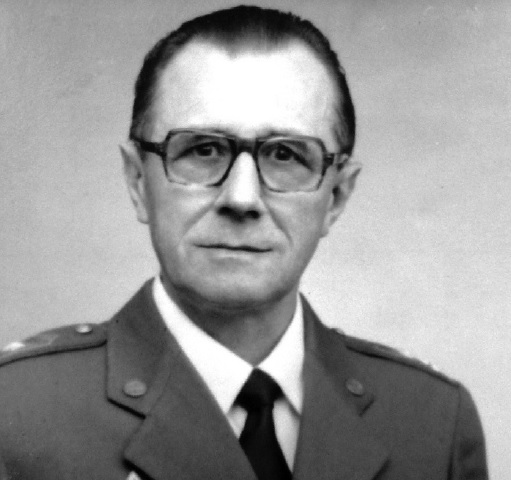 Géza Csiszár
Géza Csiszár
(source: Data sheet on Lieutenant Colonel Géza Csiszár /ret./ from the database of the Committee for National Remembrance)
Csiszár Géza was born on the 13th of July 1917 in Kelemér, Hungary. His mother’s name was Julianna Nagy, his father was Ferenc Csiszár. He completed his officer cadet school as a reservist officer in Ungvár, then volunteered for the Professional Course for Physical Training. After his involvement with the PCPT he became a career officer with the 24/11. Infantry Battalion of Huszt on the 1st of February 1939 as an Ensign.
Up to 1st of November 1942 Ensign Csiszár commandeered the anti-tank gun platoon of the machine gun company of the battalion, and served as an instructor of the reserve officer course of the 24th Infantry Regiment. On this day he has been promoted to the rank of Lieutenant and sent to the Eastern Front.
In the Don River sector he leads a platoon of the 2nd company, 24/I. Infantry Battalion. After his service on the Eastern Front he is sent to a course for staff officers in Kőszeg, Hungary. Between 15th of November 1943 and 1st of April 1944 he is the battalion commander’s adjutant and commanding officer of the 4th company, 24/11 Infantry Battalion. He has been promoted to First Lieutenant on the 1st of July 1944. He remembers the fighting in Hungary as it follows:
“Our battalion (…) had been suddenly relieved around November and moved to the area between Szerencs, and Miskolc by vehicles. During the battles here our battalion has been almost destroyed, only a force of half a company remained. I have been relieved from the front with this force and marched to Göncruszka…”
Between 2nd and 25th of December he was the commanding officer of the training company of the Royal Hungarian 24th Infantry Division in Göncruszka, then until the 22nd of January he commanded the staff company of the 24th Infantry Regiment. On this day First Lieutenant Géza Csiszár, together with the remainder of the staff company of his regiment got captured by the Romanian forces near Rozsnyó.
Upon his capture, 1st Lt. Csiszár offered his services to the Soviet forces, thus avoiding prison camp. He has participated in the “Democratic Re-educational Course” held in Budapest between 12th and 20th of December 1945, and continued his service from the 1st of March 1947 as a Captain. In this year he enters the Hungarian Communist Party (Magyar Kommunista Párt) and from 1948 he is a member of the Hungarian Workers Party (Magyar Dolgozók Pártja).
From December 1947 to April 1949 he studies at the Military Commissioner Academy in Budapest, then after taking a special course, he studies in the Soviet Union, at the Military Academy of Logistics and Transport in Leningrad until 1952. He is promoted to the rank of Major on the 1st of May 1950.
On the 15th of November 1954 Géza Csiszár has been promoted to Lieutenant Colonel. During the events of the 1956 anti-communist uprising and freedom fight he was active in guarding the Ministry of Defence between the 23rd and 29th of October as part of the training group headquarters. From the 29th of October he has moved to the 3rd District of Budapest to secure a Party building. Between the 1st and 3rd of November he has been in the Ministry of Defence again, from where on the next day, on the day of the Soviet forces attacking Budapest, he left for his home.
Lieutenant Colonel Géza Csiszár has reported for duty on the 10th of November, on the headquarters of the 3rd Internal Regiment, where he served as a deputy company commander, promoted to company commander from the 23rd of March 1957. During this period he has maintained communications with the Soviet forces operating in the area and actively helped them. As his military data sheet states:
“During the time of the counter-revolution he has stood his ground firmly and honourably.”
Lieutenant Colonel Géza Csiszár served between the 30th of April and the 22nd of November as the supply officer of the Revolutionary Officers Regiment and got awarded the “Memorial Medal for the Might of the Workers and Peasants” (Munkás-Paraszt Hatalomért) which h has been given to those, who have actively participated in the suppression of the uprising in 1956. His other medals in the order of awarding:
- Service Award (10 years) – 1959.
- Medal for Outstanding Service (15 years) – 1960.
- Medal for the Service of the Homeland (20 years) – 1965.
- Commemorative Medal for the Anniversary of the Liberation and Service Award – 1970.
Lieutenant Colonel Géza Csiszár continued his service in the General Staff of the Hungarian People’s Army (HPA) from the 15th of January 1960 as an editor and translator of the Independent Department for Editing Manuals. Then from the 1st of October of 1963 until his retirement on the 1st of July 1972 served with Department 7 of the HPA General Staff as a supplies editor officer. Lieutenant Colonel Géza Csiszár (ret.) has died on the 11th of October 2011 in Verőce, Hungary.
Sources:
- https://www.legacy.com/amp/obituaries/theage-au/172541864 (Obituary of László Molnár. Acquired: 2nd of January 2021.)
- Dr. Béla Gaskó: Dr. Csongor Győző (in.: “A Móra Ferenc Múzeum Évkönyve: Studia Naturalia 1.” Szeged, 1999. pp. 9. – 28.)
- Júlia Dunainé Bognár– Ferenc Kanyó: A második világháború szegedi hősei és áldozatai (“Tanulmányok Csongrád megye történetéből” vol. XXIII. Szeged, 1996. p. 18.)
- Kornél Martin: Nagy Árpád M. Kir. ejtőernyős főhadnagy háborús jegyzetei (in.: “Hadtörténelmi Közlemények” 1999. issue 1. p. 13.)
- Data sheet on Lieutenant Colonel Géza Csiszár (ret.) from the database of the Committee for National Remembrance (Nemzeti Emlékezet Bizottsága)
- Letters of Colonel John Molnar (Australian Army) (6th of September 2019. and 7th of September 2019.)
- Yearbook no. 61. of the “Széchenyi István” State Gymnasium of Sopron (p. 30.)
- Aladár Halász: A felvidéki szabadcsapatok és a Soproni harcéták története. Soproni egyetemisták az önkéntes szabadcsapatokban 1938-ban (in.: Soproni Szemle 2006. issue 1. pp. 55. – 74.)
- Zoltán Sőregi: Egy felemás diverzánsakció – Szabadcsapatok Kárpátalján 1938 őszén (in.: “Felderítő Szemle” vol. VII. issue 4. 2009. december pp. 148. – 156.)
- Dr. Győző Csongor: „Testnevelési Szaktanfolyam” (in.: “Magyar Szárnyak” vol. XXV. issue 25. 1997. pp. 182. – 183.)
- Dr. Péter Mujzer: A 2. páncéloshadosztály hadműveletei Galíciában, 1944-ben I. rész (in.: “Haditechnika Magazin” (Issue 2017/6. pp. 2. – 6.)
- Dr. Péter Mujzer: A 2. páncéloshadosztály hadműveletei Galíciában, 1944-ben II. rész (in.: “Haditechnika Magazin” (Issue 2018/1. pp. 2. – 6.)
- János Bene– Péter Szabó: Huszonnégyes honvédek a Kárpátokban – A m. kir. 24. gyaloghadosztály története 1944 – 1945 (Nyíregyháza 1997. p. 98. footnote n. 131.)
- Csaba Stenge B.: A Rongyos Gárda bevetése Kárpátalján 1938 – 1939 (in. “Seregszemle – Az MH Összhaderőnemi Parancsnokság szakmai-tudományos folyóirata” issue XVI. vol. 2. 2018. pp. 93. – 105.)
- Csaba Stenge B.: Magyar hadműveletek Kárpátalja visszacsatolása során 1939. március II. fázis (I. rész) (in. “Seregszemle – Az MH Összhaderőnemi Parancsnokság szakmai-tudományos folyóirata” Issue XVI. vol. 2. 2018. pp. 106. – 114.)
- József Szanyi M.: Kárpátalja visszacsatolása Magyarországhoz (1938-1939). Autonómia, birtokbavétel, katonai akciók. (PhD. Dissertation – Pázmány Péter Catholic University, Faculty of Humanities, PhD School for History Studies Budapest, 2017.)
- László Simon: A magyar katonai ejtőernyőzés rövid története (in.: “Magyar Szárnyak”, 1996. pp. 261.-271.)
- Eric Bernard: Kommandósok Ejtőernyősök és a Többiek – Betekintés a különleges erők világába (Presztízs Kiadó Budapest, 1991. pp. 17. – 18.)
- László Besey: Viharos évtizedek (Esztergom, 1999. pp. 88. – 89.)
- Csaba Hornyák: A kárpátaljai akció (1938) (in.: Aetas 1988. p. 8.)
- Zsolt Reszegi: Légi Huszárok – Az ejtőernyős csapatnem kialakulása és harcai 1938 és 1945 között (Budapest- Pápa 2013. p. 105. footnote n. 350; pp.128. – 133.)
- János Huszár: Honvéd ejtőernyősök Pápán 1939 – 1945 (Pápa, 1993. pp. 11; 76. – 77.)
- Gábor Boldizsár – Gábor Gáll – Béla Novák: A magyar ejtőernyőzés 100 éve (Zrínyi kiadó Budapest, 2018. pp. 38. – 39.)
- Dr. Jenő Farkas: A Szent László Hadosztály Katonái írták… I. A (Jegyzet) (Gödöllő, 2005. private publishing p. 31.)
- Obituary of Paratrooper First Leiutenant v. Ladányi Domonkos (in.: “Argentínai Magyar Hírlap” September 2011. p. 8.)
- „Rendkívüli beszélgetés vitéz Ladányi Domonkossal” (in.: “Argentínai Magyar Hírlap” January - February 2006. pp. 3. – 4.)
- Győző Gabriel– Ferenc Horváth: Hadtudományi Lexikon A – L (Magyar Hadtudományi Társaság Budapest, 1995.)
- Ignác Romsics: Magyarország története a XX. században (Osiris Kiadó 2001. pp. 241. – 249.).
- Dávid Kiss -

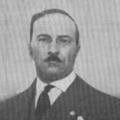
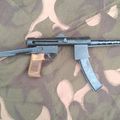
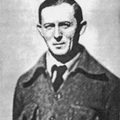
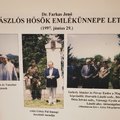
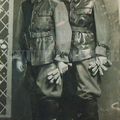
A bejegyzés trackback címe:
Kommentek:
A hozzászólások a vonatkozó jogszabályok értelmében felhasználói tartalomnak minősülnek, értük a szolgáltatás technikai üzemeltetője semmilyen felelősséget nem vállal, azokat nem ellenőrzi. Kifogás esetén forduljon a blog szerkesztőjéhez. Részletek a Felhasználási feltételekben és az adatvédelmi tájékoztatóban.